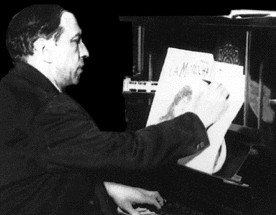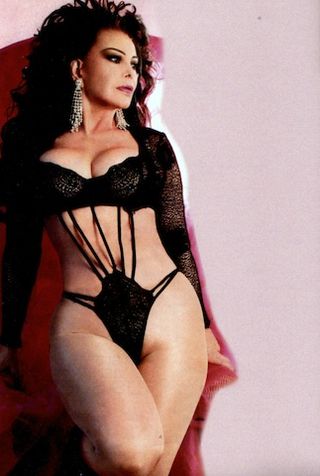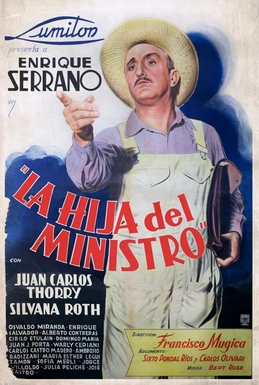
Ushuaia is the capital of Tierra del Fuego, Antártida e Islas del Atlántico Sur Province, Argentina. With a population of 82,615 and a location below the 54th parallel south latitude, Ushuaia claims the title of world's southernmost city.

Lucía, Lucía is a 2003 film directed by Antonio Serrano based on the 1997 novel La hija del caníbal by Rosa Montero. The film stars Cecilia Roth, Carlos Álvarez-Nóvoa, and Kuno Becker.

The following is an alphabetical list of topics related to the Argentina.

Juan Carlos Jiménez Rufino, known as La Mona Jiménez, is a cuarteto singer and songwriter, heralded as one of the most prominent performers of the genre.

Enrique Saborido was an Uruguayan tango pianist, violinist, composer and dance teacher.

Julio Irigoyen was an Argentine film director notable for his work during the Golden Age of Argentine cinema.

Accident 703 is a 1962 Spanish drama film directed by José María Forqué and written by Vicente Coello.

The cinema of Paraguay has historically been small. However, this has begun to change in recent years with films like El Toque del Oboe (1998); María Escobar (2002); O Amigo Dunor (2005), which competed for Best Movie in the Rotterdam International Film Festival; Hamaca Paraguaya (2006), which was screened at the Cannes Film Festival, gaining critical acclaim both in Paraguay and abroad; 7 cajas (2012); Latas Vacías (2014); and Luna de Cigarras (2014).
La Gaucha is a 1920 Argentine silent film directed and written by José A. Ferreyra with Leopoldo Torres Ríos. The film premiered in Argentina on 27 April 1920.
The Grupo Cine Liberación was an Argentine film movement that took place during the end of the 1960s. It was founded by Fernando Solanas, Octavio Getino and Gerardo Vallejo. The idea of the group was to give rise to historical, testimonial and film-act cinema, to contribute to the debate and offer an open space for dialogue and freedom of expression that was illegal at that time. With strong anti-imperialist ideas, he harshly criticized Peronism and neocolonialism. In the subsequent years other films directors revolved around the active core of the Cine Liberación group.

Chiche bombón is a 2004 Argentine romantic drama film directed and written by Fernando Musa. The film stars Iván de Pineda and Andrea Galante. The film is set in San Luis, Argentina, and Andrea Galante portrays a failed actress with diminishing prospects, becoming pregnant and living in poverty.
Cerro El Toro is a mountain in the Andes located on the border between Argentina and Chile. It has an elevation of 6,168 m above sea level. Its territory is within the Argentinean protection areas of Provincial Reserve San Guillermo. The Argentinean side is at San Juan province, commune of Iglesia. Chilean side is at the Huasco province, and commune of Alto del Carmen.

Daughter of Deceit is a 1951 Mexican film directed by Luis Buñuel, written by Luis and Janet Alcoriza and starring Fernando Soler, Alicia Caro and Fernando Soto. It is based on the farce Don Quintín, el amargao by Carlos Arniches and Antonio Estremera.

María del Rosario Mendoza Chávez was a Mexican vedette, actress, dancer, and singer. During the 1970s–1980s, she was one of the highest grossing artists in the Mexican sex comedy film genre.

His Best Student is a 1944 Argentine biographical film of the classical period directed by Lucas Demare and starring Enrique Muiño and Ángel Magaña. It was released in Buenos Aires on 22 May 1944. The film won many awards, including the award for best film of the year.

Lumiton is a former film production company and current museum located in Munro, Buenos Aires, Argentina. Lumiton Studios was founded in 1932 at the start of the Golden Age of Argentine cinema. Its lowbrow, populist films appealed to local audiences and were highly successful in Argentina and throughout Latin America. It was the main competitor to Argentina Sono Film in the 1940s.

Voltea pa' que te enamores is a telenovela produced by Venevisión International in co-production with Univision. It is an adaptation of the Venezuelan telenovela produced between 2006 and 2007 Voltea pa' que te enamores. Filming began in June 2014.
Enrique Ángel Saravia Hernández is a former Uruguayan footballer who played for clubs of Uruguay, Argentina, Chile, Paraguay and Ecuador.
The Thief is a 1947 Mexican comedy film directed by Julio Bracho and starring Luis Sandrini, Domingo Soler and Elsa Aguirre.

The Minister's Daughter is a 1943 Argentine comedy film directed by Francisco Múgica and starring Enrique Serrano, Silvana Roth and Juan Carlos Thorry. The film's sets were designed by the art director Ricardo J. Conord. It reflects Peronist ideology even though it premiered several months before the June Revolution.













